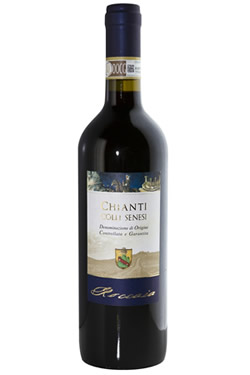Purchase Chianti from small producers
Discovering the techniques and distinctive features of a good Tuscan Chianti wine
The Chianti Region
The Chianti Region is divided into various areas. Our company is located in the municipality of San Gimignano, which is part of the Chianti Colli Senesi, one of the wines we produce in La Roccaia that is available for online purchase.
This wine production region is among the most famous in the world and encompasses, further to our territory in the province of Siena, also the southernmost municipalities of Montalcino and Montepulciano, well-known too for the production of quality wines.
The municipality of San Gimignano is also famous for another DOCG production, Vernaccia, which is also available for sale online through this site.
Why buy directly from the producer?
The answer to this question, at least from a financial point of view, is quite clearly summarised in the chart below: buying wine without intermediaries offers notable costs savings to customers.

Furthermore, engaging directly with wine producers allows having first-hand contact with them and - if interested - request information with simple and straightforward words on the winemaking process that led to that glass of red wine from Chianti, at the expense - of course - of the sommelier language.
Characteristics of Chianti DOCG
 To be called Chianti DOCG, a wine must have at least 80% Sangiovese grapes.
To be called Chianti DOCG, a wine must have at least 80% Sangiovese grapes.
La Roccaia's Chianti contains Sangiovese (in quantities starting from 85%) grapes, Canaiolo grapes and, to a lesser extent, black berried grapes.
Following the manual harvesting, the must passes from wine kegs to stainless steel tanks, where it will age for four months.
The end result is a quality red wine, with a dry and soft taste but which still exhibits good freshness. Perfect to accompany both cured meats and white meats, cooked with recipes with strong flavours, which match well with the scents of wild berries.
Go to the Chianti DOCG Techincal Sheet
Differences between manual and mechanical harvesting of grapes
Grapes can be harvested by hand, as was traditionally done, or by means of machinery that enters the vineyard and shakes the vines, detaching bunches from the plants.
What are the pros and cons of these two practices?
On the pros side, the use of machinery allows faster harvesting which is paramount for certain vintages. More importantly, the use of machinery can lower harvesting cost dramatically, which certainly favours its wide adoption.
On the cons side, mechanised harvesting of grape bunches is overly stressful on the plant, and prevents the picking of the ripest, savour bunches. Furthermore, the volume of foliage, bark and the like that will end up in the must together with the grapes is much greater and this certainly influences the final flavour of the wine. Finally, with mechanised harvesting, the bunches rarely arrive intact to the cellar and this anticipates the beginning of the chemical reactions, which then lead to the must and finally to wine.
We at La Roccaia prefer to hand-pick our grapes and favour this approach for the production of all our wines, whether it be the Chianti Colli Senesi DOCG, the Vernaccia di San Gimignano or the other Tuscan wines in production.



